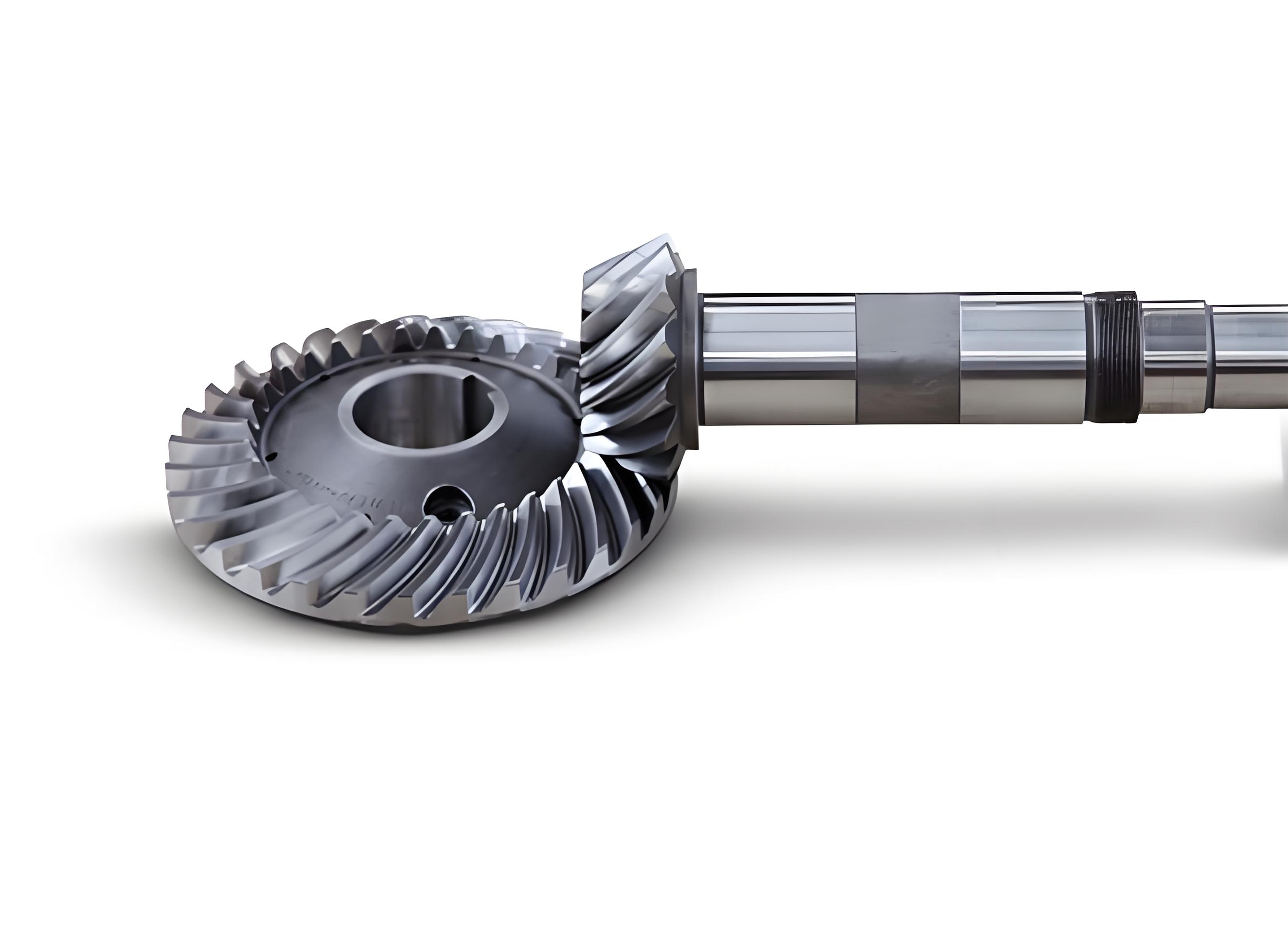This study investigates the optimization of metal injection molding (MIM) process parameters for equal-distance spiral bevel gears to address uneven volume shrinkage and powder concentration distribution. A combination of Moldex3D simulations, orthogonal experiments, BP neural networks, and NSGA-II algorithms was employed to enhance part quality by minimizing geometric defects like warpage and surface black lines.

1. Design and MIM Trial Production
The equal-distance spiral bevel gear features a spherical involute tooth profile and conical spiral tooth orientation. Key geometric parameters include:
| Parameter | Pinion | Gear |
|---|---|---|
| Number of Teeth | 16 | 23 |
| Module (mm) | 0.905 | 0.905 |
| Spiral Angle (°) | 30 | 30 |
| Pressure Angle (°) | 20 | 20 |
The tooth surface equation for spiral bevel gears combines spherical involute and conical spiral components:
$$
\begin{cases}
x = r \sin\theta \cos\phi \\
y = r \sin\theta \sin\phi \\
z = r \cos\theta
\end{cases}
$$
where \( r \) is the spherical radius, \( \theta \) represents the cone angle, and \( \phi \) denotes the spiral angle.
2. Orthogonal Experiment Design
Five critical MIM parameters were evaluated using L25(55) orthogonal array:
| Factor | Level 1 | Level 2 | Level 3 | Level 4 | Level 5 |
|---|---|---|---|---|---|
| Holding Pressure (MPa) | 98 | 100 | 102 | 104 | 106 |
| Filling Time (s) | 0.20 | 0.25 | 0.30 | 0.35 | 0.40 |
| Gate Diameter (mm) | 0.40 | 0.45 | 0.50 | 0.55 | 0.60 |
Key simulation results showed:
$$
\sigma_{\text{shrinkage}} = \sqrt{\frac{1}{n}\sum_{i=1}^{n}(S_i – \mu_S)^2}
$$
$$
\sigma_{\text{powder}} = \sqrt{\frac{1}{n}\sum_{i=1}^{n}(C_i – \mu_C)^2}
$$
where \( \sigma \) represents standard deviation, \( S_i \) and \( C_i \) denote local shrinkage and powder concentration values.
3. Multi-objective Optimization
The BP neural network architecture with 5-11-2 nodes achieved prediction errors below 5%:
| Metric | Training MAE | Test MAE |
|---|---|---|
| Shrinkage | 2.59% | 3.68% |
| Powder | 2.90% | 4.52% |
NSGA-II optimization yielded Pareto solutions with optimal parameters:
$$
\begin{aligned}
\text{Minimize } & f_1(\mathbf{x}) = \sigma_{\text{shrinkage}} \\
& f_2(\mathbf{x}) = \sigma_{\text{powder}} \\
\text{Subject to } & 98 \leq x_1 \leq 106 \\
& 0.2 \leq x_2 \leq 0.4 \\
& 0.4 \leq x_3 \leq 0.6 \\
& 220 \leq x_4 \leq 260 \\
& 30 \leq x_5 \leq 70
\end{aligned}
$$
Optimal parameters reduced shrinkage variation by 14% and powder segregation by 31.6% compared to initial trials, significantly improving spiral bevel gear quality.
4. Conclusion
The proposed methodology effectively optimizes MIM processes for complex spiral bevel gears, demonstrating:
- 15-30% reduction in dimensional variation
- Improved surface quality with powder concentration CV < 0.02
- Validation of rotational demolding feasibility for spiral gear geometry
This approach provides a systematic framework for manufacturing high-precision spiral bevel gears through MIM, combining numerical simulation with intelligent optimization algorithms.
